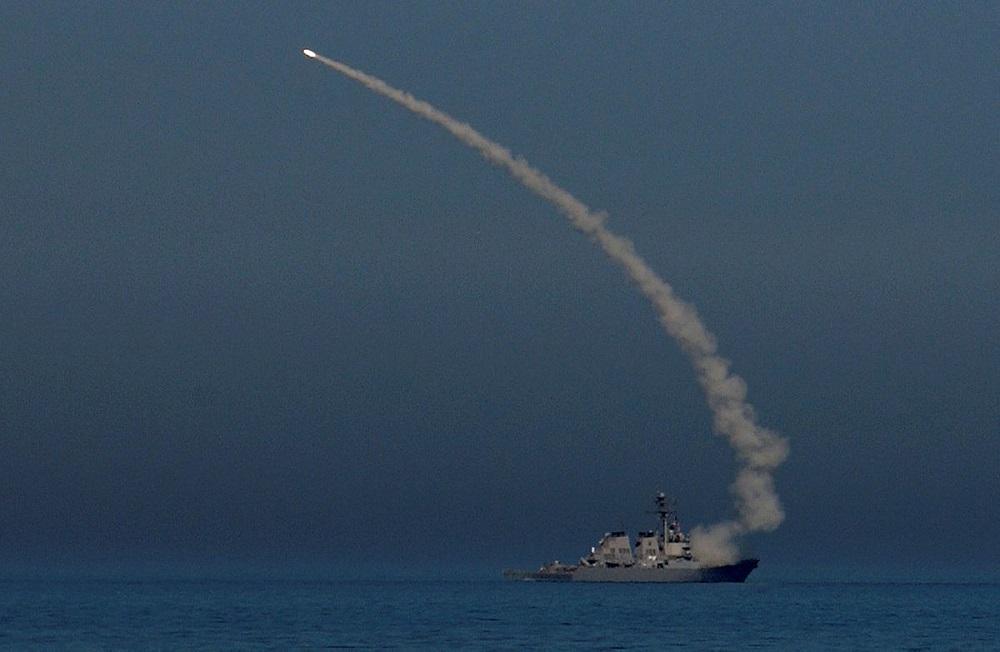Australia’s future fleet—frigates and Tomahawks, or tugboats and pyrotechnics?
Posted By John Powers and John Coyne on March 1, 2024 @ 14:42

Today’s asymmetric national security environment, characterised by what Foreign Minister Wong recently referred to as ‘grey zone threats’, requires far more than the acquisition of neoteric naval, air, ground, and cyber weapon systems by Australia. It also necessitates a concerted effort by government, in cooperation with industry, to procure the most critical component within a precision weapon system, intelligence mission data, the foundation of which is precision intelligence.
If everything in the government’s surface fleet review [1] comes to fruition, and all the defence strategic review’s [2] recommendations are enacted, the daunting reality is that without precision intelligence, the new Hunter class frigates are nothing more than tugboats, Tomahawk missiles mere pyrotechnics, and F-35 fighter jets, crop-dusters.
As it applies to AUKUS [3], nuclear fission is the muscle of a Virginia class submarine, but precision intelligence is the brain and neuro system for the entire vessel, its torpedos, missiles, sonar and command and control systems. Without precision intelligence, the muscles don’t know what to do or when to do it.
The enormity of the task and the fastidiousness required to gather the precision intelligence needed for the weapon systems Australia is obtaining is something weapon developers and manufacturers don’t discuss much because the costs are mammoth. This has plagued defence acquisitions in the United States since the late 1990s and it’s the primary reason weapon system costs balloon so dramatically.
It is commonly believed that the business of the intelligence community is simply to produce assessments that provide clarity on the intentions, capabilities, and weaknesses of potential adversaries to our national security leaders. These analytical products are important, however, the most critical product we receive from the intelligence community, unbeknownst to most, is precision intelligence.
The amount Australia’s national intelligence community spends on precision intelligence is classified. However, in 2023, our closest ally, the US, spent a substantial portion of its 143-billion-dollar intelligence budget producing such high-level data for its weapon systems, cyber activities, and ISR operations.
It’s assessed that the axis of dictatorships—China, Russia, Iran, and North Korea—spent as much as the US or more on their precision intelligence systems, data, and architectures in 2023. They are expected to spend twice that amount in 2024.
The production of precision intelligence has been a systemic problem for Australia for at least eight years. That’s been caused by our intelligence agencies and defence contractors poaching intelligence and data analysts from each other with scant regard for the consequences it has to each other’s mission, or to overall national security objectives. As a result, Australia’s ability to produce precision intelligence is waning.
The creation of the position of director-general of national intelligence (DGNI) in 2017 was a good start by government in attempting to fix the production of precision intelligence issues within the intelligence community. However, until the DGNI is given sufficient budget, force management and intelligence production authority, individual agencies and government departments will continue to operate in a bifurcated and independent manner. That will leave Australia at the back of the pack in what the members of the Five-Eyes intelligence sharing agreement now refer to as the ‘precision intelligence arms race’.
Defence has tried to rectify some of its internal challenges in producing precision intelligence by creating the position of chief of defence intelligence and the defence intelligence group. It is also establishing a combined intelligence centre in Canberra between Australia’s Defence Intelligence Organisation and the US Defense Intelligence Agency. Unfortunately, these actions only assist Defence, not the broader intelligence community, and they don’t eliminate the principal issues hindering Australia’s production of precision intelligence—personnel poaching, duplication of activities, lack of resources and a failed requirements management system.
All one has to do is look at Ukraine to appreciate the value of precision intelligence on targeting and cyber operations. The effectiveness of the Bayraktar TB2 drone, the Patriot air defence system, Harpoon anti-ship and HIMARS artillery rocket missiles is directly attributable to the precision intelligence imbued into each of these weapon systems.
As operational information from Israel becomes more available, the importance and power of precision intelligence in the urban and sub-terranean (tunnels) operational environment will further illustrate why it’s critical for Australia’s intelligence community to be on its front foot in its development.
The Houthis appear to be master gunners due to precision intelligence!
The process that develops and produces precision weapons is a marathon. For the intelligence community, this marathon is run as a sprint because of the speed precision intelligence technologies are advancing and the immediacy of the need.
If Australia is to regain the distance it has lost in this race, government must align its sovereign capabilities strategy for national security, intelligence, and surveillance with its weapons capabilities vision and acquisition strategy—and fund it!
Precision weapons without precision intelligence are nothing more than delusions.
Article printed from The Strategist: https://aspistrategist.ru
URL to article: /australias-future-fleet-frigates-and-tomahawks-or-tugboats-and-pyrotechnics/
URLs in this post:
[1] surface fleet review: https://www.defence.gov.au/about/reviews-inquiries/independent-analysis-navy-surface-combatant-fleet
[2] defence strategic review’s: https://www.defence.gov.au/about/reviews-inquiries/defence-strategic-review
[3] AUKUS: https://pmtranscripts.pmc.gov.au/sites/default/files/AUKUS-factsheet.pdf
Click here to print.